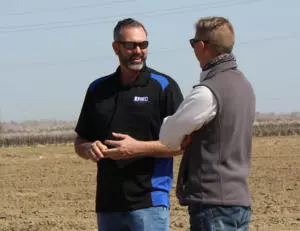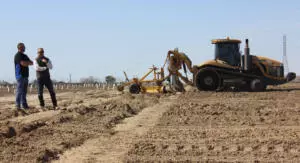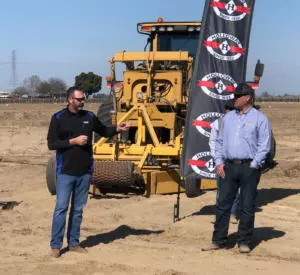Testimonials - Double E Farms
A fifth-generation farmer, Matthew Efird has been the Vice President of Double E Farms since 1999.
The company has been growing almonds and other permanent crops south of Fresno sine the early 1980s. When it comes to redevelopment of their aging orchards and vines, Efird said they’ve done what many growers traditionally do when it comes to ripping and prepping new developments.
“We’ve used big iron, big shanks, ripping through the field with a lot of horsepower to break it up as best we can,” Efird said at the Holloway & AgSoilworks Field Day in Raisin City on Feb. 26, 2021.
“But as we started implementing AgSoilworks at our place, it’s just a night and day difference between what we were doing in terms of soil prep,” Efird added. “You’ve got a lighter tractor, with less horsepower, doing a far superior job in my opinion.”
 How it Works
How it Works
AgSoilworks’ precision deep ripping service uses its patented Vibrosoiler winged ripper, which cycles up to twice per second, to rip and break out two to three times the width and depth of a traditional pass.
“The uniformity that we’ve gotten in the orchards and vineyards that we’ve planted behind this process is just amazing,” Efird said. “You’re not fighting any sort of hardness in the soil. … This really creates a soil bed for the trees. It’s completely shattered. It’s completely loose. There’s no reason you shouldn’t get down to four feet (of breakout) with this.”
Breaking Up Hard Soils to Optimize Inputs
 As Efird explains, AgSoilworks’ deep-ripping technology is able to break up hard pan and make every row feel like it’s been developed with 4-6 feet of freshly spread potting soil.
As Efird explains, AgSoilworks’ deep-ripping technology is able to break up hard pan and make every row feel like it’s been developed with 4-6 feet of freshly spread potting soil.
This allows growers to get gypsum, compost and fertilizer down further through the soil profile, optimizing crop and soil health, water-holding capacity and making it easier for roots to access water and nutrients.
“Frankly, there is no other system that we will use, period,” Efird concluded. “You can look at the trees we planted. We planted in October of 2019 and these trees are just monsters now. We’re very happy with those almonds, and it’s very indicative of the results that we’ve gotten time and time again with this process.”


































